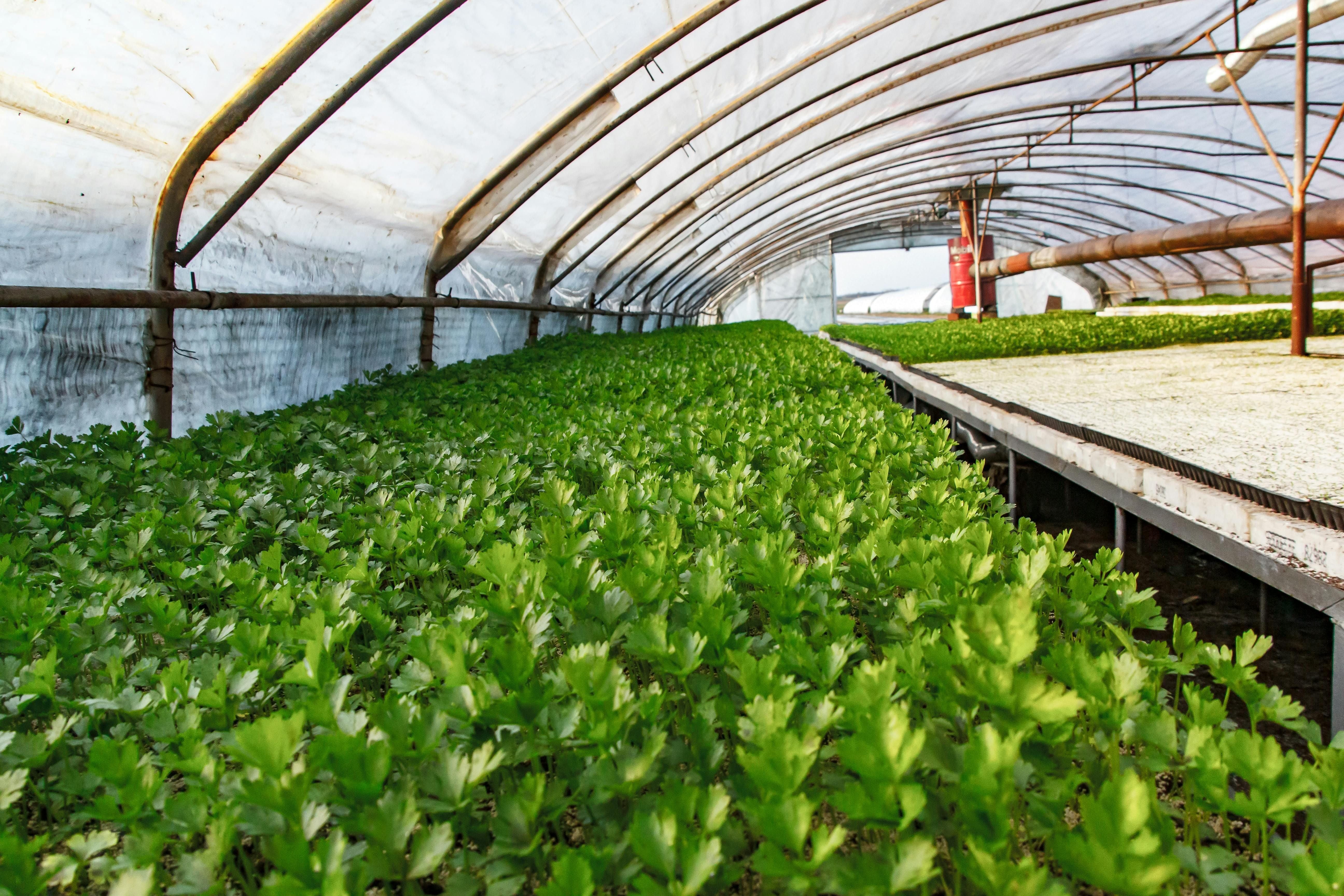How Efficient Airflow Systems Can Boost Crop Yields
)
Optimizing crop yields in contemporary agriculture involves more than just choosing the best seeds, soil, and nutrients; it also entails establishing the perfect conditions for plant growth. Effective airflow systems are a game-changer among the various technological developments in greenhouse and indoor farming. These systems aid in controlling temperature, humidity, and CO2 levels—all of which are essential for the proper growth of crops—by preserving ideal air circulation.
This blog will discuss how effective airflow systems can increase crop yields and why they are crucial to contemporary agricultural methods. We'll also go over the advantages of these systems, how they operate, and useful advice for integrating them into your expanding business.
The Science of Plant Growth and Airflow
For vital functions like transpiration and photosynthesis, plants depend on their surroundings. By guaranteeing that carbon dioxide (CO2), oxygen, and moisture are distributed evenly across the growth area, airflow is essential to these activities.
Key Factors Affected by Airflow:
- Temperature Regulation: A consistent temperature is maintained throughout the growing area and hotspots are avoided with adequate airflow. Maintaining constant temperatures helps plants grow steadily and avoids the stress that comes from sharp variations
- Humidity Control: Low humidity can cause plants to dry out, while high humidity can result in mould, mildew, and fungal infections. A stable climate for crops is produced by effective airflow, which regulates moisture levels.
- CO2 Distribution: CO2 is essential for photosynthesis. Without proper air circulation, plants may not receive adequate CO2, which can limit growth and reduce yields.
- Pollination Support: Particularly in crops like tomatoes and peppers, airflow can facilitate pollination by facilitating the movement of pollen between blooms.
Why Inadequate Airflow Is an Issue:
Ineffective ventilation can cause illnesses, pest infestations, and uneven plant development. Microclimates produced by inadequate circulation in the growing area might result in uneven crop quality and lower yields.
Benefits of Efficient Airflow Systems
- Maximized Crop Yields: Every plant is given the ideal growing conditions when there is efficient airflow. These technologies help plants realize their full potential and produce larger yields by minimizing problems like heat stress and diseases linked to humidity.
- Improved Plant Health: By keeping leaves dry and reducing stagnant air pockets, which are breeding grounds for bacteria and fungi, air movement lowers the risk of bacterial and fungal illnesses. Plants in better health are more robust and yield more.
- Energy Efficiency: HVAC systems and other climate control technologies are made to integrate seamlessly with contemporary airflow systems. Growers can cut operating expenses and energy use by improving air movement.
- Enhanced Climate Control: To maintain exact temperature and humidity levels, effective airflow systems combine with environmental control technology. This is especially helpful in indoor farms and greenhouses where strict regulations are required.
- Scalability and Adaptability: Airflow systems can be tailored to meet your unique requirements, regardless of how big or small your business is. Cutting-edge technologies are adaptable to various crops and growth environments and are scalable.
Components of an Efficient Airflow System
Typically, a well-designed airflow system consists of the following parts:
- Ventilation systems and fans: Consistent air movement throughout the growth area is ensured by horizontal airflow (HAF) blowers. And exhaust fans assist keep CO2 levels stable by removing stale air.
- Ducting: Air is distributed evenly throughout the room thanks to ducting, which directs air efficiently.
- Automation and Sensors: Environmental sensors keep an eye on CO2, humidity, and temperature. In order to maintain ideal conditions, automated controls modify airflow as necessary.
- Systems for Filtration of Air: By eliminating dust, pollen, and other impurities, filters enhance air quality and lower the chance of plant diseases.
- Shutters and Louvres: Accurate climate control is made possible by adjustable louvres that regulate the airflow's intensity and direction.
Best Practices for Implementing Airflow Systems
Use these best practices to get the most out of your airflow system:
Make a Crop-Type-Based Plan
Every crop has different needs for airflow. For instance, fruiting plants like tomatoes need more ventilation for efficient pollination, but leafy greens do best with moderate air circulation.
Maintain Proper Spacing
Plants should not be overcrowded because this can impede ventilation and produce microclimates. By allowing air to circulate freely around each plant, proper spacing lowers the chance of illness.
Monitor and Adjust
Keep an eye on the surroundings and make any necessary adjustments to your ventilation system. To maintain constant conditions without human involvement, use automation and sensors.
Invest in Quality Equipment
To guarantee dependability and longevity, use premium fans, filters, and other parts. Better performance and fewer maintenance expenses will eventually make the initial expenditure worthwhile, even though it could be more initially.
Clean and Maintain Systems
To avoid dust and debris accumulation, clean fans, filters, and ducting on a regular basis. Maintaining your equipment properly guarantees effective operation and increases its longevity.
The Future of Airflow in Agriculture
Effective airflow systems will become more and more crucial to sustainable farming methods as agriculture develops. These systems are becoming more widely available and efficient thanks to developments in automation and smart technology, which enables producers to maximize yields while reducing their negative effects on the environment.
Farmers may minimize waste, provide the best conditions for their crops, and maintain their competitiveness in a market that is changing quickly by investing in effective airflow systems.
A key element of contemporary agriculture, effective airflow systems provide a host of advantages that have a direct bearing on crop quality and yields. Growers may maximize their operations and get outstanding outcomes by comprehending the physics underlying airflow, making the appropriate equipment investments, and adhering to best practices.
Prioritizing effective airflow is a step toward healthier plants, larger yields, and a more sustainable future, regardless of the size of your greenhouse or indoor farm.
Ready to optimize your growing operations? Contact Cultivate & Equipment today to learn more about our advanced airflow systems and how they can transform your agricultural practices. Visit www.cultivateandequipment.com or call us at 1-844-253-0663 to speak with an expert.
| Tags:GreenhouseLatest News |

